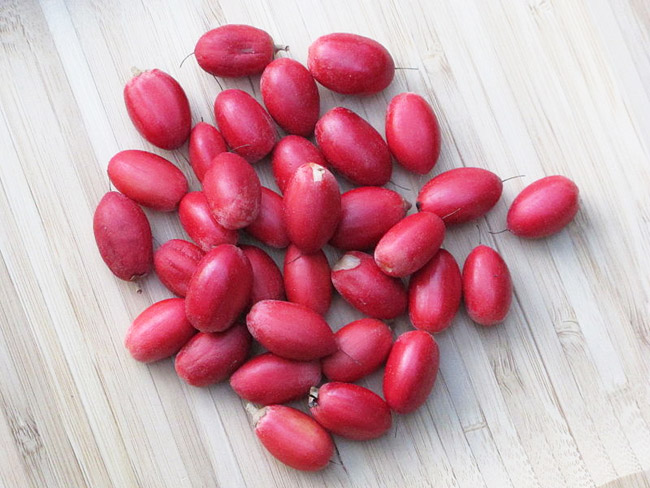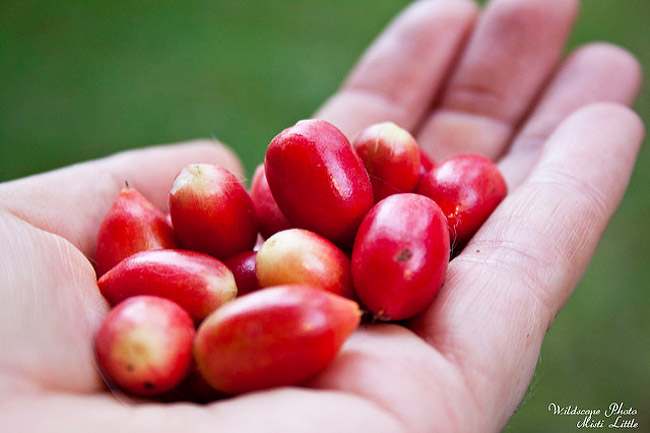Health Benefits of Rarest and Exotic fruits of the world

 Miracle fruit
Miracle fruit
Synsepalum dulcificum, also known as the miracle fruit, is a plant with a
berry that, when eaten, causes sour foods (such as lemons and limes)
subsequently consumed to taste sweet. This effect is due to miraculin, which is
used commercially as a sugar substitute. Common names for this species and its
berry include miracle fruit, miracle berry, miraculous berry, sweet berry, and
in West Africa, where the species originates, agbayun, taami, asaa, and ledidi.
The berry itself has a low sugar content and a mildly sweet tang. It contains a
glycoprotein molecule, with some trailing carbohydrate chains, called miraculin.
When the fleshy part of the fruit is eaten, this molecule binds to the tongue's
taste buds, causing sour foods to taste sweet. At neutral pH, miraculin binds
and blocks the receptors, but at low pH (resulting from ingestion of sour foods)
miraculin binds protons and becomes able to activate the sweet receptors,
resulting in the perception of sweet taste. This effect lasts until the protein
is washed away by saliva (up to about 60 minutes).
The names miracle fruit and miracle berry are shared by Gymnema sylvestre and
Thaumatococcus daniellii, which are two other species of plant used to alter the
perceived sweetness of foods.
In tropical West Africa, where this species originates, the fruit pulp is used
to sweeten palm wine. Historically, it was also used to improve the flavor of
maize bread gone sour.
Attempts have been made to create a commercial sweetener from the fruit, with an
idea of developing this for patients with diabetes. Fruit cultivators also
report a small demand from cancer patients, because the fruit allegedly
counteracts a metallic taste in the mouth that may be one of the many side
effects of chemotherapy. This claim has not been researched scientifically,
though in late 2008, an oncologist at Mount Sinai Medical Center in Miami,
Florida, began a study, and by March 2009, had filed an investigational new drug
application with the U.S. Food and Drug Administration.
In Japan, miracle fruit is popular among patients with diabetes and dieters.The
shelf life of the fresh fruit is only 2-3 days. Because miraculin is denatured
by heating, the pulp must be preserved without heating for commercial use.
Freeze-dried pulp is available in granules or in tablets, and has a shelf life
of 10 to 18 months.
Health Benefits of Miracle fruit

1)
Miracle Fruit is a natural, healthy and totally harmless alternative to
sugar and sweeteners.
2) The Miracle Fruit contains a natural protein called miraculin that binds to
the tongue's taste buds causing bitter and sour foods to taste sweet. Miracle
Fruit is all natural and no adverse or side effects have never been found by
eating this completely healthy and natural berry.
3) Beneficial for diabetics: For people trying to lose weight or just cut back
on their sugar intake. For people who need to avoid sugar like diabetics.
4) Beneficial for cancer patients: For people under chemotherapy that are
feeling that metallic taste when eating, using Miracle Fruit they will regain
the flavor of foods and the metallic taste will not be present.
5) Beneficial for Dieters: Miracle Fruit is a natural dieting supplement as it
contains no calories, but it momentarily alters your taste buds enabling you to
taste sweet while eating or drinking.
